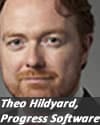The threat of regulatory spot checks has doubled suspicious transactions reports to UK regulators, but more needs to be done to tackle the root problem of market abuse.
Theo Hildyard, product manager, market surveillance at Progress Software, believes the spot checks threat employed by the UK’s Financial Services Authority (FSA) has been successful, but the industry needs to do more to deal with the issue.
“The sheer scale of the industry and the compliance issues around the London Interbank Offered Rate (LIBOR) and the J.P. Morgan whale trading incident and similar cases is very great,” said Hildyard. “The number of suspiscious transaction reports we’ve seen is a good thing, but the FSA is trying to scare people into doing the right thing, It’s industry that needs to do more,” Hildyard said.
Barclays was fined over US$450 million by US and European regulators in June over its part in the manipulation of LIBOR – a benchmark used to underpin US$300 trillion worth of financial instruments – with several other banks also thought to be involved. In May, J.P. Morgan trader Bruno Michel Iksil, also known as the London Whale, was responsible for US$2 billion in losses resulting from credit derivatives trades
In light of these incidents, Hildyard believes a cultural shift needs to take place within trading firms to monitor fraudulent trading, as the technology already exists to do so.
“We have the technology to analyse variations of the trade cycle and brokers can see if their clients are trying to launder money, or if there’s rogue trading going on, but we need to invest more in technology,” he said.
In June it was reported that the FSA’s market monitoring department would spot check a dozen of the 500 banks and brokers most active in the UK, and approach firms with low suspicious transaction reporting figures.
“I’m not sure there has been a sea-change, but rather more of a reaction to the scare tactics employed by the FSA,” added Hildyard.
In addition to the UK’s own efforts, the European Commission has taken steps to bolster rules on dealing with suspicious trades via the Market Abuse Directive (MAD).
A revised version of the directive was widened by European policy makers earlier this year to include order-to-trade ratios and address high-frequency trading, and may also include criminal proceedings for offenders, which Hildyard believes is a good move.
“The MAD directive was a very necessary step and in its initial phases was very specific asset classes, which have been extended, which is a good move.
“The regulator sets the rules and monitors that the rules are being followed and they should be able to hold people to account,” Hildyard said.
MAD is currently being reviewed by the European Commission and Council of the European Union, ahead of its introduction in 2014-15.
